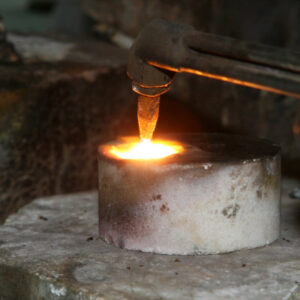TWS is a Great Training Option for Everyone
Learn more about how we can prepare you to advance your career.
Welding symbols can aid professional welders and welding students alike. These cryptic-looking symbols are often found on engineering drawings, and they communicate information to welders about the project, including the sizes and types of welds to make.1
The American National Standards Institute (ANSI) and the American Welding Society (AWS) publish the complete set of symbols, so there are consistent standards throughout the industry.1
Deciphering welding symbols can be an essential skill for a welder because it can help ensure their work meets design specifications.2 Some companies even require welding job applicants to know how to read them.3
This article will give you a general overview of what welding symbols are, the basics of reading them and some of the most common ones you might see in a welding training program or while out working in the field.
Have You Considered a Career in the Skilled Trades?
Fill out the form to recieve a no obligation info packet.
How to Read Welding Symbols: The Basics
At first glance, welding symbols may look more like hieroglyphics than a modern communication method, but once you know how to read them, it’s easy to see how much they can help and guide welders.
The AWS’ weld symbol chart breaks down each symbol, making it easier to follow.4
Arrow and Reference Line
Every weld begins with an arrow and reference line. The arrow typically points up or down and usually points directly to the area that is to be welded.3
However, if there is not enough room on the drawing for the arrow, it can be drawn on the opposite side, and this may be indicated by written instructions. If the instructions are written on the top of the reference line, they are for the opposite side. Instructions written under the reference line apply to the arrow side.3
Weld Joint Symbols
There are also specific symbols for weld joints which are indicated on the charts published by the AWS. These symbols are placed on the reference line, either above or below depending on if the weld is for the arrow side or the other side.3
The symbols also provide information on the weld length and size as well as other specifications. Just as the location of the arrows is important, so is the location of the information on the symbols. Again, placement is important. One piece of information that is in the wrong location can result in an incorrect weld.3
Weld Size and Location Symbols
A circle located at the intersecting joint of the arrow and reference line means that the weld is to go all the way around.3
Intermittent welds are noted using Length and Pitch, which are displayed in inches. The distance between the centers of welds is called the pitch. On a weld symbol, the pitch is always located to the right of the length.3
Some weld symbols will contain a flag located at the point where the reference line intersects the arrow. This is extremely important because it means that the weld must be done in the field, not in the shop.3
What Are Some of the Main Welding Symbols?

Below are the main welding symbols for the more common types of welds:4
- Fillet
- Plug or slot
- Spot or projection
- Stud
- Back or backing
- Surfacing
- Edge4
All of these are noted on the arrow side and most are noted on the other side, with the exception of the stud weld and surfacing weld. In the case where both sides are to be welded, only the fillet weld and the edge weld are used.4
Groove welds are noted with specifically placed lines to form the symbols for welds:4
- Square
- V
- Bevel
- U
- J
- Flare-V
- Flare bevel
- Scarf for braced joint4
All of these are used for the arrow side, other side and both sides.4
Why Are Welding Symbols Important?
There can be a lot of vital information contained within a single weld symbol: the joint configuration, the type of weld, the arc welding process, where to perform the weld and more.5
Knowing how to read welding symbols can be an important part of being a professional welder. It can mean the difference between a weld that meets design requirements and one that doesn’t.2
Where can you learn more about welding symbols? A welding training program. Tulsa Welding School students get instruction in reading welding symbols, fundamental arc welding processes, safety and much more. Call Tulsa Welding School to see what a welding education could hold for you. Call (855) 237-7711.
1https://www.millerwelds.com/resources/article-library/deciphering-weld-symbols
2https://www.twi-global.com/technical-knowledge/job-knowledge/weld-symbols
3https://weldinganswers.com/9-basic-steps-to-read-weld-symbols/
4https://www.millerwelds.com/Training/PresentationsQuizzes/IntroToWelding/Welding8/presentation_html5.html
5https://sielearning.tafensw.edu.au/toolboxes/toolbox905/2_draw/draw_t7/htm/draw7_2_1.htm







